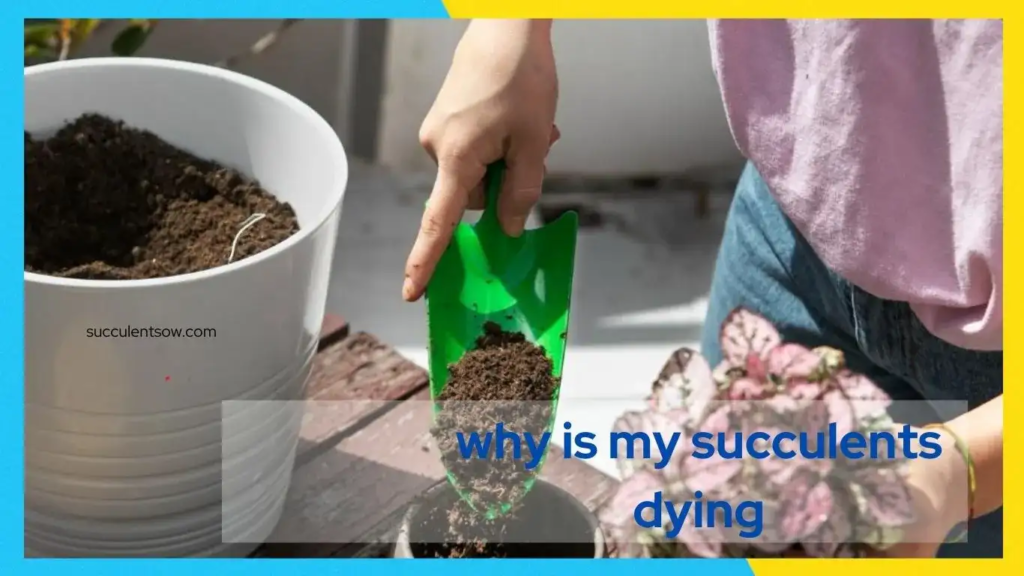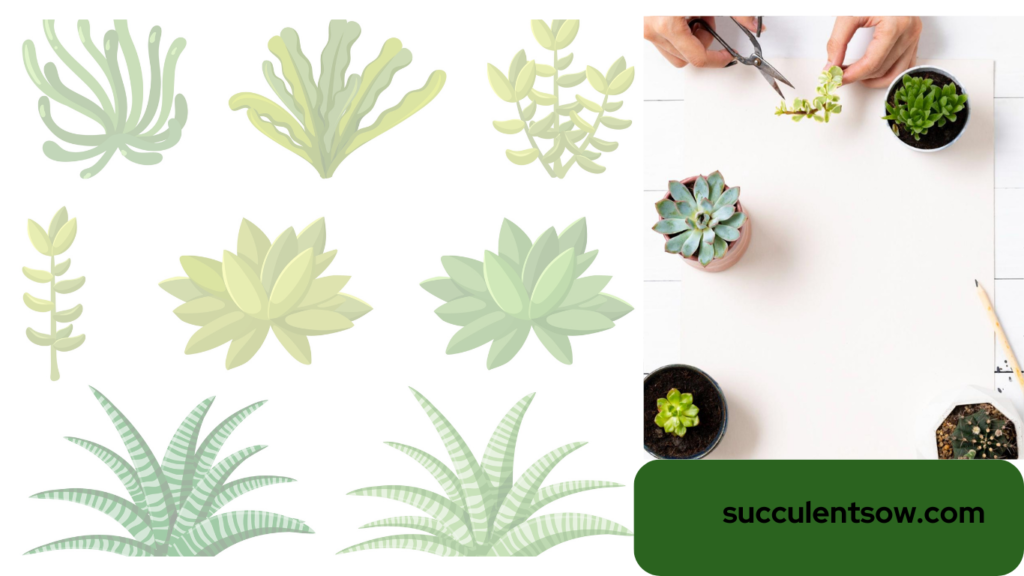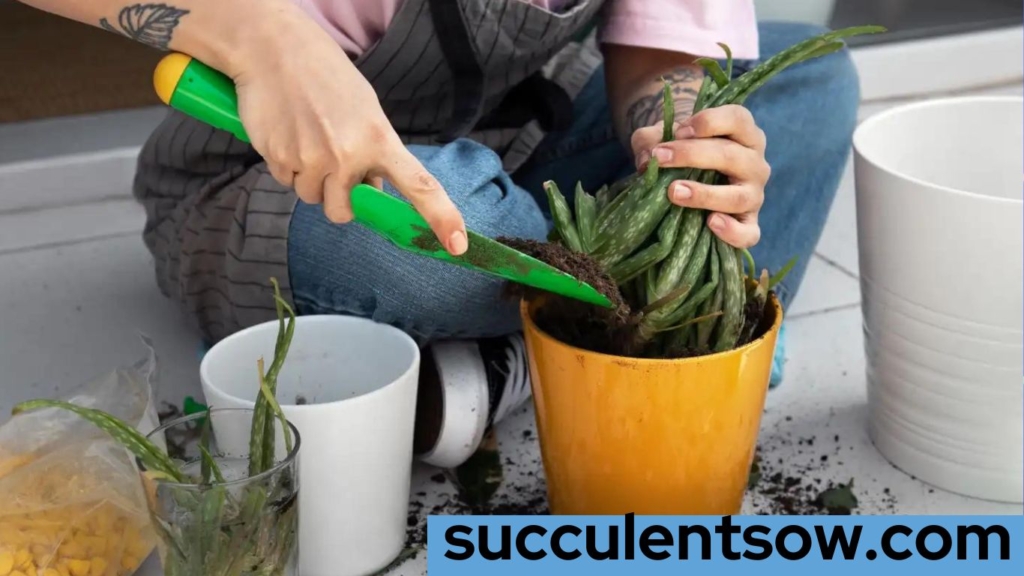
Introduction
Succulents have gained immense popularity among plant enthusiasts due to their unique and beautiful appearance. These hardy plants are known for their ability to store water in their leaves, making them resilient and low-maintenance. However, even the most experienced succulent owners may encounter situations where their plants start to show signs of distress. In this comprehensive guide, we will explore the common reasons behind succulent deterioration and provide valuable insights on how to revive and care for your beloved plants.
Why Is My Succulent Dying?
Succulents can experience various issues that lead to their decline. Understanding the underlying causes is crucial for effective troubleshooting and intervention. Let’s delve into the possible reasons for your succulent’s decline:
1. Understanding the Basics of Succulents
Succulents are a diverse group of plants that store water in their leaves, stems, or roots, enabling them to survive in arid environments. Their ability to retain moisture is what makes them drought-tolerant and low-maintenance houseplants.

2. Overwatering: A Silent Killer
Overwatering is one of the most common mistakes succulent owners make. These plants have adapted to survive in dry conditions and prefer infrequent watering. When succulents are overwatered, their roots become waterlogged, leading to root rot and eventual death.
3. Inadequate Lighting: A Major Culprit
Succulents thrive in bright, indirect sunlight. Insufficient light can cause them to become etiolated, stretching out and losing their compact form. Lack of light also disrupts their metabolic processes, weakening the plant and making it more susceptible to diseases.
4. Poor Drainage: Suffocating Roots

Proper drainage is crucial for succulents as it prevents water from pooling around the roots. Without adequate drainage, the roots can become waterlogged, suffocating the plant and leading to root rot. Ensure your succulents are potted in containers with drainage holes and use well-draining soil.
5. Pest Infestation: Silent Invaders
Pests like mealybugs, aphids, and spider mites can infest succulents, causing damage to their leaves and stems. These tiny invaders weaken the plant and can lead to its demise if left untreated. Regularly inspect your succulents for signs of pests and take appropriate measures to eliminate them.
6. Nutritional Deficiencies: Starving Succulents
Succulents require a balanced diet of nutrients to thrive. Lack of essential nutrients, such as nitrogen, phosphorus, and potassium, can manifest as discoloration, stunted growth, and overall decline. Fertilize your succulents with a specialized fertilizer formulated for these plants to ensure they receive adequate nutrition.
7. Temperature Extremes: Too Hot or Too Cold
Succulents have specific temperature preferences and can suffer in extreme conditions. Some succulents thrive in hot climates, while others prefer cooler temperatures. Exposure to prolonged heat or frost can cause irreversible damage to the plant. Understanding the temperature requirements of your succulents is crucial for their well-being.
8. Improper Potting Mix: Choosing the Right Blend

Using the correct potting mix is vital for the health of your succulents. They require a well-draining medium that allows excess water to escape quickly. Avoid using regular garden soil, as it tends to retain moisture and can lead to root rot. Opt for a succulent-specific potting mix or create your own by combining materials like perlite, sand, and well-aged compost.
9. Root Rot: A Grave Concern
Root rot is a common problem caused by overwatering and poor drainage. It occurs when the roots are consistently exposed to excess moisture, leading to fungal or bacterial infections. Signs of root rot include blackened, mushy roots and a foul odor. To prevent root rot, water your succulents sparingly and ensure they are potted in well-draining containers.
10. Overcrowding: Give Them Space to Thrive
Succulents need adequate space to grow and flourish. Overcrowding can lead to competition for resources, increased humidity, and reduced airflow, making the plants more susceptible to diseases. Give your succulents enough room to spread out by repotting or dividing them when necessary.
Symptoms of Dying Succulents: How to Identify Decline
Succulents are known for their resilience and ability to withstand challenging conditions. However, even these hardy plants can experience decline and show symptoms that indicate they are in danger of dying. By recognizing the signs of a dying succulent early on, you can take appropriate action to save it. In this article, we will explore the common symptoms of dying succulents to help you identify and address any issues promptly.
1. Wilting or Drooping
One of the first signs of a dying succulent is wilting or drooping leaves. Healthy succulents usually have firm, plump leaves that stand upright. If you notice your succulent’s leaves becoming soft, limp, or starting to droop, it may be a sign of dehydration or root damage.
2. Yellowing or Discolored Leaves
Yellowing or discoloration of the leaves is another common symptom of a dying succulent. While a certain amount of leaf discoloration is normal as older leaves naturally wither and die, widespread yellowing or browning can indicate underlying issues such as overwatering, nutrient deficiencies, or pest infestation.
3. Soft or Mushy Stems
Healthy succulents have firm, fleshy stems that store water. If you notice that the stems of your succulent have become soft, mushy, or appear rotten, it is likely a sign of overwatering or root rot. This condition compromises the plant’s ability to absorb water and nutrients, leading to its decline.
4. Lack of Growth or Stunted Growth
A thriving succulent will exhibit steady growth and produce new leaves or offsets regularly. If your succulent shows little to no growth over an extended period or if the new growth appears stunted, it could indicate insufficient light, improper watering, or nutritional deficiencies. Slow or stunted growth is a warning sign that the succulent is not thriving.
5. Leaf Drop

Excessive leaf drop is a cause for concern and can indicate a dying succulent. While succulents naturally shed their older leaves, an unusually high rate of leaf drop can be a sign of stress, such as overwatering, underwatering, or environmental changes. If your succulent is losing leaves rapidly or from the center of the plant, it requires immediate attention.
6. Blackened or Rotting Roots
Root health is vital for the overall well-being of a succulent. If you notice blackened, mushy, or foul-smelling roots when inspecting the plant, it is a clear indication of root rot. Root rot occurs due to overwatering or poor drainage, and it can quickly lead to the death of the succulent if not addressed promptly.
7. Pest Infestation
Succulents are susceptible to pests like mealybugs, aphids, and spider mites. If you observe tiny insects, webbing, or visible damage on the leaves, stems, or roots of your succulent, it is likely suffering from a pest infestation. Prolonged infestation can weaken the plant and contribute to its decline.
8. General Lack of Vitality
A dying succulent often displays an overall lack of vitality. It may appear pale, shriveled, or generally unhealthy. The plant may lose its characteristic plumpness, vibrancy, and vigor. If your succulent lacks vitality and does not respond positively to basic care, it requires immediate attention.
If you observe one or more of these symptoms in your succulent, it’s essential to take action promptly. Assess the possible causes, such as overwatering, inadequate lighting, pests, or nutritional deficiencies, and make the necessary adjustments to revive your succulent. Remember that each succulent has specific care requirements, so tailor your approach accordingly.
How to Revive a Dying Succulent: Step-by-Step Guide
Reviving a dying succulent requires prompt action and the implementation of proper care strategies. By following a step-by-step approach, you can give your struggling succulent the best chance of recovery. In this guide, we will walk you through the process of reviving a dying succulent.
Step 1: Identify the Problem
The first step in reviving a dying succulent is to identify the underlying issue causing its decline. Assess the symptoms displayed by the plant, such as wilting, yellowing leaves, or mushy stems, and determine the possible causes. Common issues include overwatering, inadequate lighting, pest infestation, or nutrient deficiencies.
Step 2: Adjust Watering Habits
Overwatering is a leading cause of succulent decline. If you suspect overwatering is the problem, adjust your watering habits immediately. allow the soil to dry out completely between waterings to prevent root rot. make certain that the pot has right drainage to keep away from water accumulation. regularly resume watering once the soil is dry, however do no longer overcompensate with excessive watering.
Step 3: Improve Lighting Conditions
Inadequate lighting can weaken succulents and hinder their growth. Assess the lighting conditions for your succulent. If it is not receiving enough light, move it to a brighter location, preferably near a window with indirect sunlight. If natural light is limited, consider using artificial grow lights to supplement the lighting needs of your succulent.
Step 4: Treat Pest Infestation
Pests like mealybugs, aphids, and spider mites can damage succulents and contribute to their decline. Inspect your succulent closely for any signs of pests. If you identify an infestation, treat it promptly using organic insecticidal soap or neem oil. Thoroughly coat the affected areas, including the leaves, stems, and roots, with the chosen treatment. Repeat the process as necessary until the pests are eliminated.
Step 5: Address Nutritional Deficiencies
Nutritional deficiencies can weaken succulents and impede their recovery. Provide your dying succulent with a balanced fertilizer specifically formulated for succulents. Look for a fertilizer with a higher ratio of phosphorus and potassium to promote root and foliage development. follow the commands on the fertilizer package for utility costs and frequency. Be cautious not to overfertilize, as this can cause similarly pressure to the plant.
Step 6: Repot if Necessary

If your succulent is suffering from root rot or poor drainage, repotting may be necessary to save it. Carefully remove the succulent from its current pot and examine the roots. Trim any blackened or rotting roots with clean, sharp scissors. Allow the roots to dry for a day or two. Choose a new pot with proper drainage holes and fill it with a well-draining succulent potting mix. Gently place the succulent in the new pot, ensuring the roots are spread out, and cover them with the potting mix. Avoid overpacking the soil.
Step 7: Provide Optimal Care
Consistent and appropriate care is crucial for reviving a dying succulent. Maintain a regular watering schedule, ensuring the soil is completely dry before each watering. Adjust the watering frequency based on the specific needs of your succulent and the surrounding environmental conditions. Monitor the lighting conditions and ensure your succulent receives adequate sunlight or artificial light. Continue providing the necessary nutrients through balanced fertilization. Keep a close eye on your succulent’s progress and make adjustments as needed.
By following these steps and giving your dying succulent the care it requires, you can increase its chances of recovery. Remember to be patient, as succulents may take time to bounce back. With proper attention and care, you can revive your succulent and enjoy its beauty once again.
Conclusion
Understanding the reasons behind a dying succulent is the first step toward reviving and nurturing your plant back to health. By addressing common issues such as lighting, watering, soil conditions, pests, and environmental stress, you can provide optimal care for your succulents. Remember to observe your plants closely, make adjustments as needed, and enjoy the beauty and resilience of these fascinating desert plants.
FAQ
Q1. What are the signs of a dying succulent?
A1. Signs of a dying succulent include wilting or drooping leaves, yellowing or discoloration of leaves, soft or mushy stems, lack of growth or stunted growth, excessive leaf drop, blackened or rotting roots, pest infestation, and a general lack of vitality.
Q2. What does it mean if a succulent’s leaves are wilting or drooping?
A2. Wilting or drooping leaves in a succulent are often signs of dehydration or root damage. It indicates that the plant is not receiving enough water or the roots are compromised.
Q3. Why are the leaves of my succulent turning yellow or discolored?
A3. Yellowing or discoloration of succulent leaves can be caused by overwatering, nutrient deficiencies, or pest infestation. While some leaf discoloration is normal, widespread yellowing or browning suggests underlying issues.
Q4. What does it indicate if the stems of my succulent are soft or mushy?
A4. Soft or mushy stems in a succulent are typically a result of overwatering or root rot. These conditions hinder the plant’s ability to absorb water and nutrients, leading to its decline.
Q5. Why is my succulent not growing or showing stunted growth?
A5. Insufficient light, improper watering, or nutritional deficiencies can cause a lack of growth or stunted growth in succulents. Slow or stunted growth serves as a warning sign that the succulent is not thriving and needs attention.
Q6. Why do my indoor succulents keep dying?
A6. Possible reasons for indoor succulents dying include:
- Overwatering: Succulents require well-drained soil and infrequent watering. Too much water can lead to root rot and the death of the plant.
- Lack of sunlight: Succulents need bright, indirect light to thrive. Insufficient light can cause them to become weak and leggy, eventually leading to their demise.
- Poor soil drainage: Succulents prefer soil that drains well to prevent waterlogging. Using the wrong type of soil or containers without drainage holes can cause water to accumulate, harming the plants.
- Inadequate ventilation: Lack of airflow around succulents can make them susceptible to fungal diseases. Good air circulation is essential for their overall health.
- Temperature extremes: Succulents are adapted to arid conditions and prefer temperatures that range between 60°F and 80°F (15°C to 26°C). Extreme heat or cold can stress or kill the plants.
- Pest infestation: Common pests like mealybugs and spider mites can damage succulents, causing them to wither and die if left untreated.
